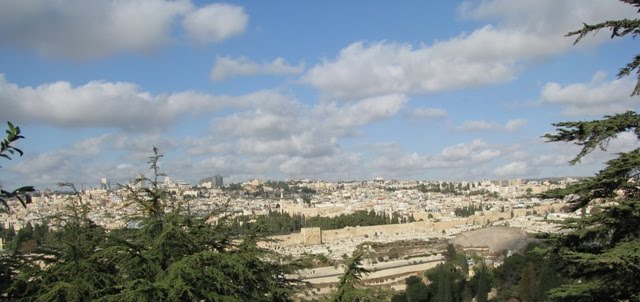Numbers 15:37 Again YHWH spoke to Moses, saying, 38 "Speak to the children of Israel: Tell them to make tassels on the corners of their garments throughout their generations, and to put a blue thread in the tassels of the corners. 39 "And you shall have the tassel, that you may look upon it and remember all the commandments of YHWH and do them, and that you may not follow the harlotry to which your own heart and your own eyes are inclined.
The people of Israel were commanded to affix a blue thread (tekhelet) to the corner of their garments as a constant and conspicuous reminder of their obligation to keep the commandments. Israel was also ordered to use the blue dye for the Tabernacle’s curtains, its inner partition and for the priests’ garments.]
Historical and geographical factors caused the tekhelet-making process and the source of the dye to be lost even though tzit-tzit continued to be worn. What was the source of this Biblical blue?
Talmudic sources claimed that the blue dye was extracted from a Hilazon- a marine mollusk covered by a shell, who was “similar to the sea” and could be found along the northern coast of the Land of Israel. They also mentioned that the color of the dye was similar to that of the sky and sea, and it was extracted from the mollusks while still alive.
Attempts to re-track the organic blue dye started in the 19th century. The Radzyner Rebbe led an expedition in search of the lost Hilazon. He was convinced that a certain squid was the source for the color. The Chief Rabbi of Ireland, Rabbi Herzog, later the Chief Rabbi of Israel investigated the results of the Radzyn Teknelet, and came to the conclousion that the squid was not the source of Biblical blue. He proposed the purple dye snail as a likely source for tekhelet.
So is there any evidence for this? We went to the Dor museum to find out.



North to the Tel, an area of rockcut pools and channels has been unearthed, interpreted by scholars as a system of dyeing installations or ponds for keeping Murex snails in captivity.

Also in Tel Dor, some large piles of crushed Murex shells were uncovered, evidence of a local industry. It takes 20,000 snails to make 2 grams of blue dye. We can be certain that this area was a purple-dye installation!
Also interesting to us as believers is the fact that the book of Acts tells us of a women was a ”seller of purple”:
Acts 16:14 Now a certain woman named Lydia heard us. She was a seller of purple from the city of Thyatira, who worshiped God. Adonai opened her heart to heed the things spoken by Paul.
The actual building that houses the museum was also interesting to us as it was connected to the history of Zichron Ya’acov. It was initially a factory for glass bottles destined for the winery at Zichron Ya’acov. It was founded by Baron Edmond de-Rothchild in 1891, as part of his support of the Jewish settlement. The factory suffered from many difficulties. The local sand was unsuitable for glass manufacture causing the production of dark glass. There was a lack of knowledge and experience in running the factory. Many people died of Malaria. The factory was closed in 1896.

The museum also displays two impressive cannons found during underwater surveys of the bay at Dor. The actual canons are exhibited on replicas of the original wooden carts. They were part of the equipment thrown into the sea at Napoleon’s order when his defeated army was camped on the beach on the night of May 21st, 1799. The smaller canon was in French use after it had been captured by the French army in one of its wars with Spain. The inscription on the canon relates that it was cast on December 12th, 1793 in Seville (south Spain) for the army of Carolos the Fourth, king of Spain, using copper from Lima, Peru.


The Turkish cannon bears the Ottoman emblem of the moon-crescent and star. This was one of the Muslim cannons lost to the French during the battle of Jaffa. These weapons were only a small part of the artillery cast into the sea. We learn this from letters and diaries of French soldiers that endured that horrible night on the beach. Lois-Alexander Bertheir writes: “…Bonaparte decided that all the means of transport would be preferably employed for evacuating the sick and the wounded. He had 22 canons thrown into the sea.









No comments:
Post a Comment